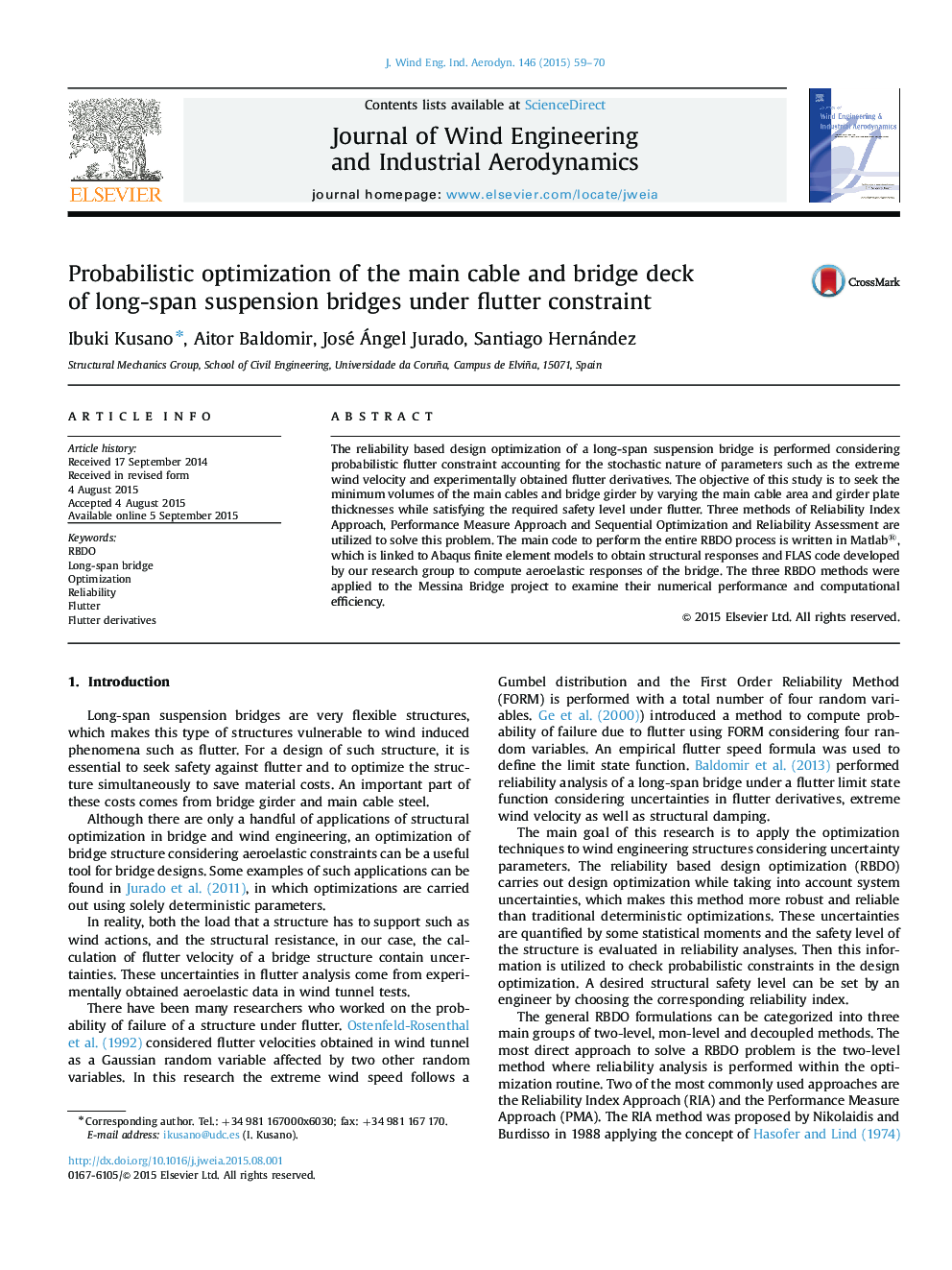| Article ID | Journal | Published Year | Pages | File Type |
|---|---|---|---|---|
| 293184 | Journal of Wind Engineering and Industrial Aerodynamics | 2015 | 12 Pages |
•Three RBDO methods were applied to a long-span bridge under flutter constraint.•Main cable area and girder plate thicknesses are considered as design variables.•Extreme wind speeds and flutter derivatives are considered as random variables.•The Messina Bridge was used as an application example.SORA was the most computationally efficient, while PMA was faster than RIA.
The reliability based design optimization of a long-span suspension bridge is performed considering probabilistic flutter constraint accounting for the stochastic nature of parameters such as the extreme wind velocity and experimentally obtained flutter derivatives. The objective of this study is to seek the minimum volumes of the main cables and bridge girder by varying the main cable area and girder plate thicknesses while satisfying the required safety level under flutter. Three methods of Reliability Index Approach, Performance Measure Approach and Sequential Optimization and Reliability Assessment are utilized to solve this problem. The main code to perform the entire RBDO process is written in Matlab®, which is linked to Abaqus finite element models to obtain structural responses and FLAS code developed by our research group to compute aeroelastic responses of the bridge. The three RBDO methods were applied to the Messina Bridge project to examine their numerical performance and computational efficiency.
